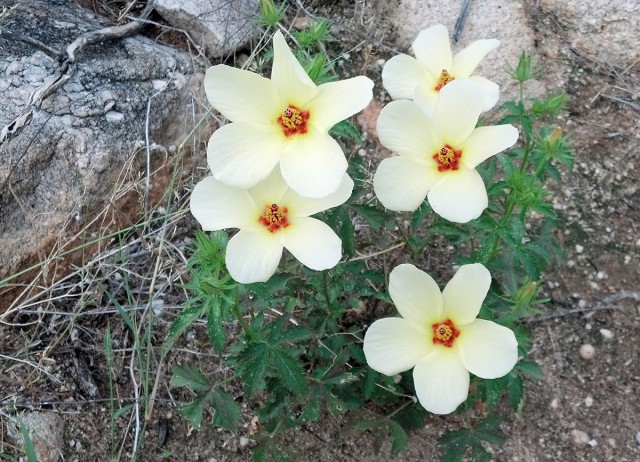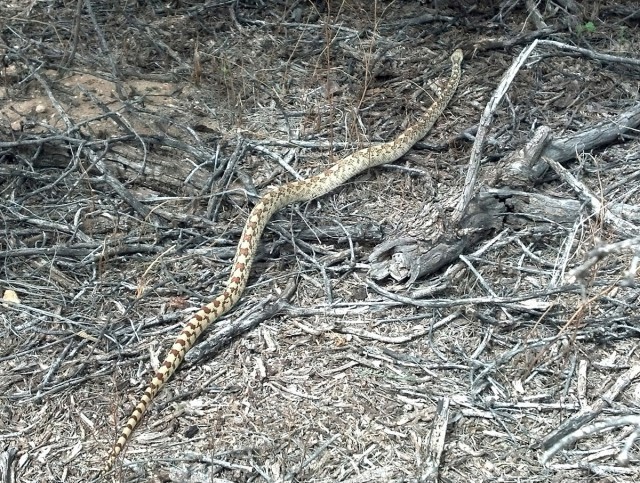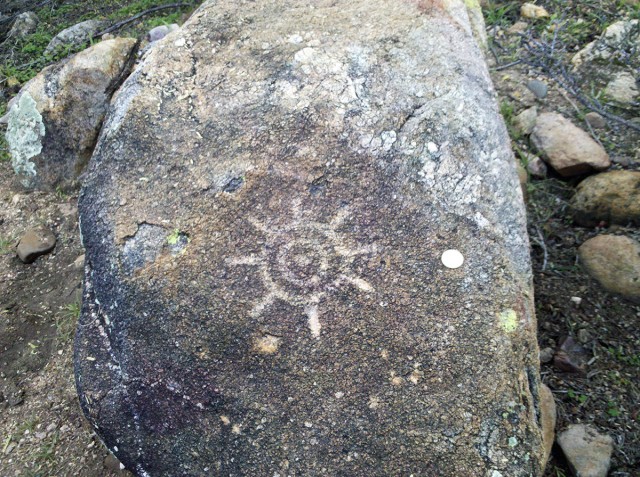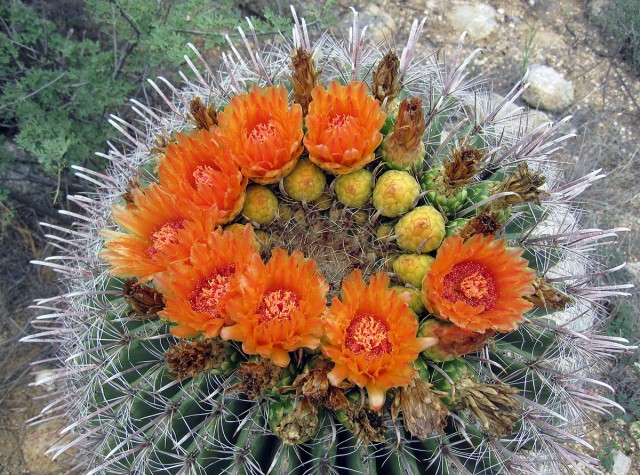- Home
- >
- Preservation Archaeology Blog
- >
- Back to the 70s—Enjoying an Archaeological Prese...
Back to the 70s—I am talking temperatures, desert temperatures. Last weekend, daytime temperatures around Tucson kept to the high 70s for much of the day. For me, that means that hiking in the desert is once again possible. My time is always limited, so I don’t even need to think about where to go: Catalina State Park. Located in Oro Valley just north of Tucson, the park is a place of incredible natural beauty, and it is packed with archaeological sites.

On Saturday, I loaded my faithful dog companion, Snoop, into the car, and we were able to visit a site that I have been monitoring in recent years for impacts by horses and hikers. Things looked good. Unfortunately, Snoop likes to eat grass whenever it is available—not often in the desert—and recent rains had produced abundant grasses. Instead of being dragged along the trail by an enthusiastic, panting beagle, I had to pull him. An OK hike, but it could have been better.

On Sunday, Snoop got a giant bone, and I snuck out on my own. The result was excellent. I spent five hours literally wandering around the desert. I checked out sites that I hadn’t visited in a decade or more and a couple that I had never seen.
The potential to visit, revisit, and someday visit yet again the same archaeological site is at the heart of preserves such as Catalina State Park. When Archaeology Southwest carried out the survey of the core area of the park in 1986, we knew a lot less about the archaeology of the Tucson Basin than we do now. One of the sites I visited Sunday for the very first time struck me as likely to date to the Early Ceramic period, a temporal concept that didn’t even exist when we did our original work.

Going back to the actual ‘70s (yes, the 1970s), when I arrived in Tucson to attend graduate school at the University of Arizona, the area that is now Catalina State Park was threatened by a major residential development. If that development had gone forward and today’s park had never been established, there might have been a modicum of archaeological fieldwork conducted prior to construction. But even with the best of intentions and methods, archaeologists simply weren’t ready to effectively address the diversity and density of all that is there. In retrospect, the magnitude of the loss would have been tremendous. Instead, we now have a state park where dozens of important places of the past are protected in a larger landscape.
In following up on my new insight that one of the sites recorded in 1973 and again in 1986 may date to the 700s or even earlier, I found that the previous recorders observed no decorated sherds there. And they noted a high frequency of flaked stone artifacts relative to pottery sherds. That’s what I expect for an Early Ceramic period site, but I’ll soon bring some ceramic experts to observe the surface artifacts and assess what they mean for the age of the site. A preserve is there for the long term. New ideas can be evaluated and re-evaluated from now into the distant future. That makes me very happy—and not just because of the information value here. I am grateful, too, for the mountain, flowers, and wildlife I encountered in this landscape with remarkable archaeology.

One thought on “Back to the 70s—Enjoying an Archaeological Preserve”
Comments are closed.
Explore the News
-
Join Today
Keep up with the latest discoveries in southwestern archaeology. Join today, and receive Archaeology Southwest Magazine, among other member benefits.

Many of who survived so long after the Age of Aquarius have increasing time and interest to do formal and informal “citizen science” monitoring of archeological sites in our own “backyards.” My favorite backyard outings when things warm up to the 70s are the area now designated as the Rio Grande del Norte National Monument and public land sites in the vicinity of Ojo Caliente (which should have special designation beyond the administrative ACEC [Area of Critical Environmental Concern]). I wish my view was as upbeat as what Bill has reported for Catalina State Park. In 1972 the US population was about 212 million and is now about 315 million. In the US Southwest the proportional population growth has been even more dramatic than the 100 million increase. The innovative Arizona Site Steward volunteer program developed in the 80s as part of the solution to the obvious relationship between population growth and needs for increased resources allocated for archeological resource protection has been modeled in many places including where I live. But the troubling news is that our current solutions are not adequate for the new normal of threats to archeological resource conservation. Institutions that we thought were our best allies have defected (National Geographic TV) and industrialization of the public domain of a scale that we couldn’t have dreamed of when we were responding to the threats of the Watt Coal Fire Sale, the MX Missile Race Track Basing Mode, and increased Uranium Mining. Not only has Oil and Gas leasing gone wild, but “clean solar, wind and nuclear” and associated pie lines and transmission lines have been fast tracked making many landscapes unrecognizable. We may be past the “tipping point” if we don’t do some innovative new thinking about these threats and the health of another artifact of the 70s, Bill Lipe’s seminal “A Conservation Model for American Archaeology.”
I have been cogitating for a while about the success of the Conservation Model, and my forays to my back yard are at best show ambiguous indicators. I think unwittingly the archeological landscape conservation model that I imagined we were implementing, has reverted to what in Conservation Biology and pre 70s archeology could be characterized a a “Refugia Model.” The notion of the refugia model is that somehow if we preserve a few zoological and botanical gardens we are preserving the opportunity to restore damaged landscapes when we regain the political economy to do so. I increasingly am hearing reference to “pristine” areas and urgings that other areas are too damaged to save, and therefore should be abandoned as “sacrifices” to the “realities” of the realities of the moment. Of course I am expected to accept others superior wisdom of what is realistic.
Like Bill, I am fortunate after forty years as a practicing archeologist to have the resources, health and interest to contemplate the difference between the “Refugia Model” and the “Landscape Model” of archeological conservation by taking a walk in “the commons.” But I am very troubled by these walks in my backyard where the indicators of “archeological health” that I now can examine more fully on my own whim (instead of the press of the next project” do not bode well. I see unreclaimed damage, both purposeful and inadvertent where ever I look: invasive cheat grass primed for next years catastrophic fire and consequent flood, ATV trails pioneering new routes across archeological sites, unreclaimed abandoned oil and gas operations that clearly exposed archeological sites, open excavations by vandals in looted Gallina sites and a populace that wants to focus on their freedom to roam instead of the ethics of “Leave no Trace” and “Tread Lightly.”
My wisest supervisors in my bureaucrat’s career told me to not point out the problem without suggesting some possible solutions, so here goes:
1) Every citizen should take on one federal “undertaking” to review and comment on as an “interested party” if not part of an organization with “consulting party status.”
2) We all should be “citizen scientists” and report site condition with GPS and digital photo to our Preservation Office databases. If the preservation office does not have the facility to accept, store and retrieve this information we should urge them to develop that capacity and volunteer to help them do so.
3) We should advocate both archeological landscape conservation and adding additional refugia both as individuals and by supporting organizations such as Southwest Archaeology that are already doing the hard work of advocacy;
4) We should continue to offer our expertise (pro bono to the extent we can afford to do so) to locate, identify and evaluate archeological resources for local governments, private landowners and civic organizations that may not be legally required to conduct archeological assessments in plans they are formulating and projects that are being implemented.
Whether we are in the terminal period of the Piscean Age or at the dawning of the Age of Aquarius it is clear to me that the Conservation Model will not be realized simply by affirming it to be our ideology. Let’s all keep walking in our local refugia and strategizing how we can defend them and establish more.